When it comes to making material decisions, tile delivers versatile and innovative solutions, for any of our work or living spaces, both inside and out. Let’s delve into the multifaceted advantages that tiles bring to the forefront of interior design.
Innovative Solutions
Modern ceramic and porcelain tiles bring exciting possibilities to interior design. Forget boring patterns and limited choices. Today’s tiles come in various shapes, colors, and textures, giving homeowners the freedom to be creative. Thanks to 3D printing, tiles can now imitate natural materials like wood, marble, stone, fabric, or unique patterns, adding a distinctive touch to any room.
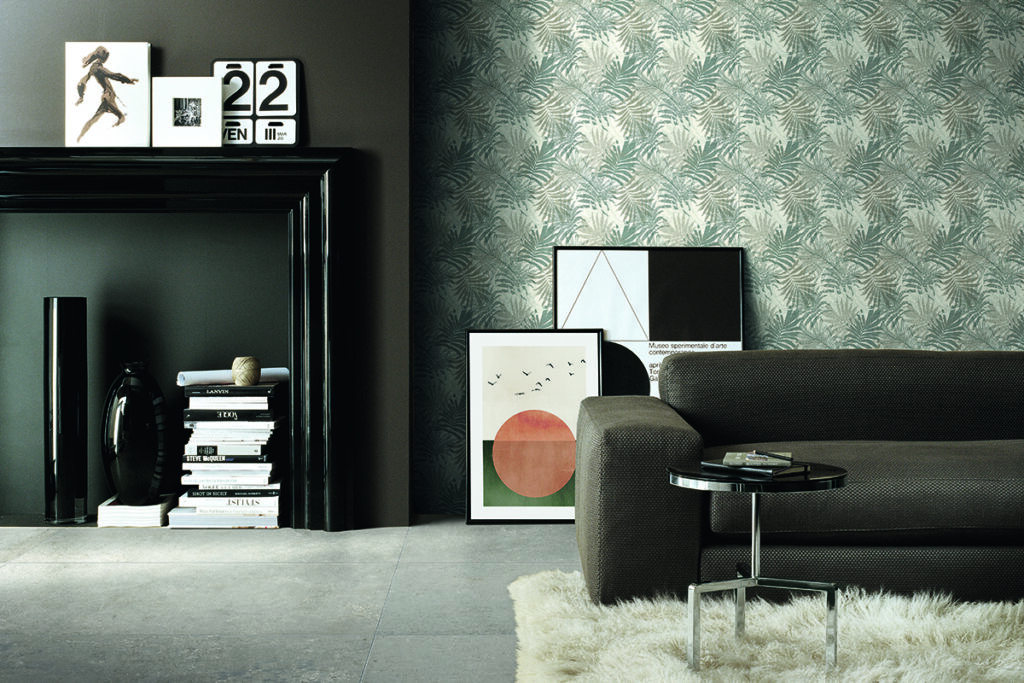
Botanicals bring the beauty of nature with a soft and elegant color palette, shown here Perenne™ color body porcelain from the Enhance™ collection.
Sustainability at the Core
Choosing eco-friendly materials for interior design is crucial for minimizing environmental impact. Tiles offer a sustainable option with their production methods. Ceramic, porcelain, and glass tiles are often made from recyclable materials, reducing the carbon footprint in home construction and renovation. Also, the durability of tiles means they last longer, reducing the need for frequent replacements and contributing to a sustainable, long-lasting design solution. Learn more about Emser’s commitment to sustainability.
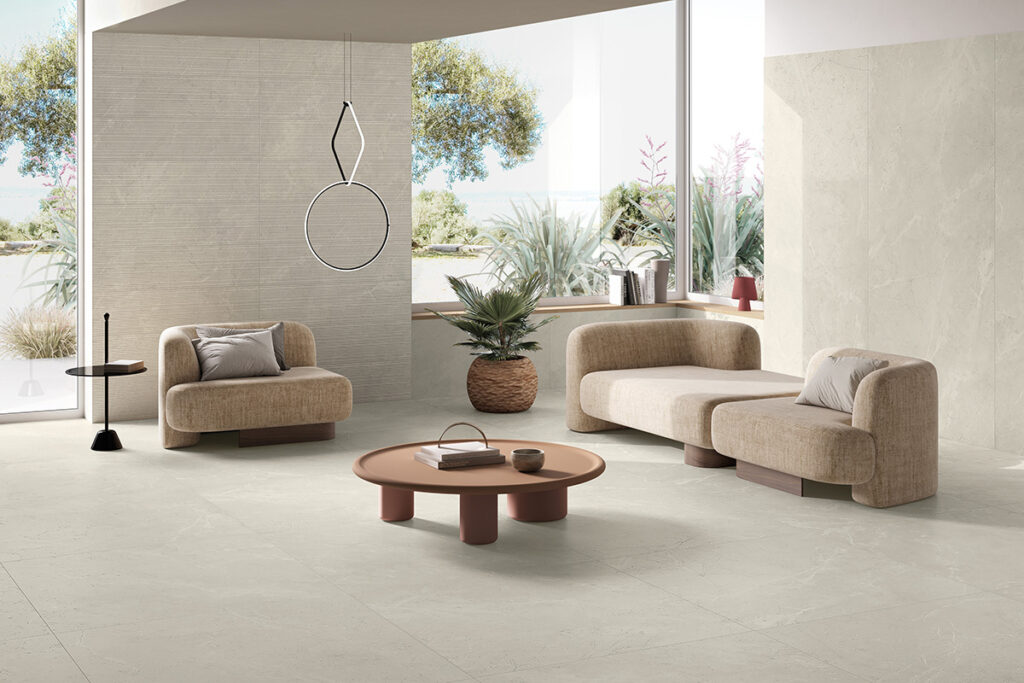
Terramor™ glazed porcelain offers many must-have benefits to complement its sustainable nature: multiple sizes, including large format, the look of natural stone, a textural finish and clean palette of colors.
Wet Area Design
Tiles reign supreme in wet areas, offering a seamless blend of style and functionality. From bathrooms and kitchens to laundry spaces and mudrooms, tile is resistant to water damage, mold, and mildew. This not only ensures the longevity of the design but also promotes a hygienic environment, crucial for spaces that are prone to moisture and spills.
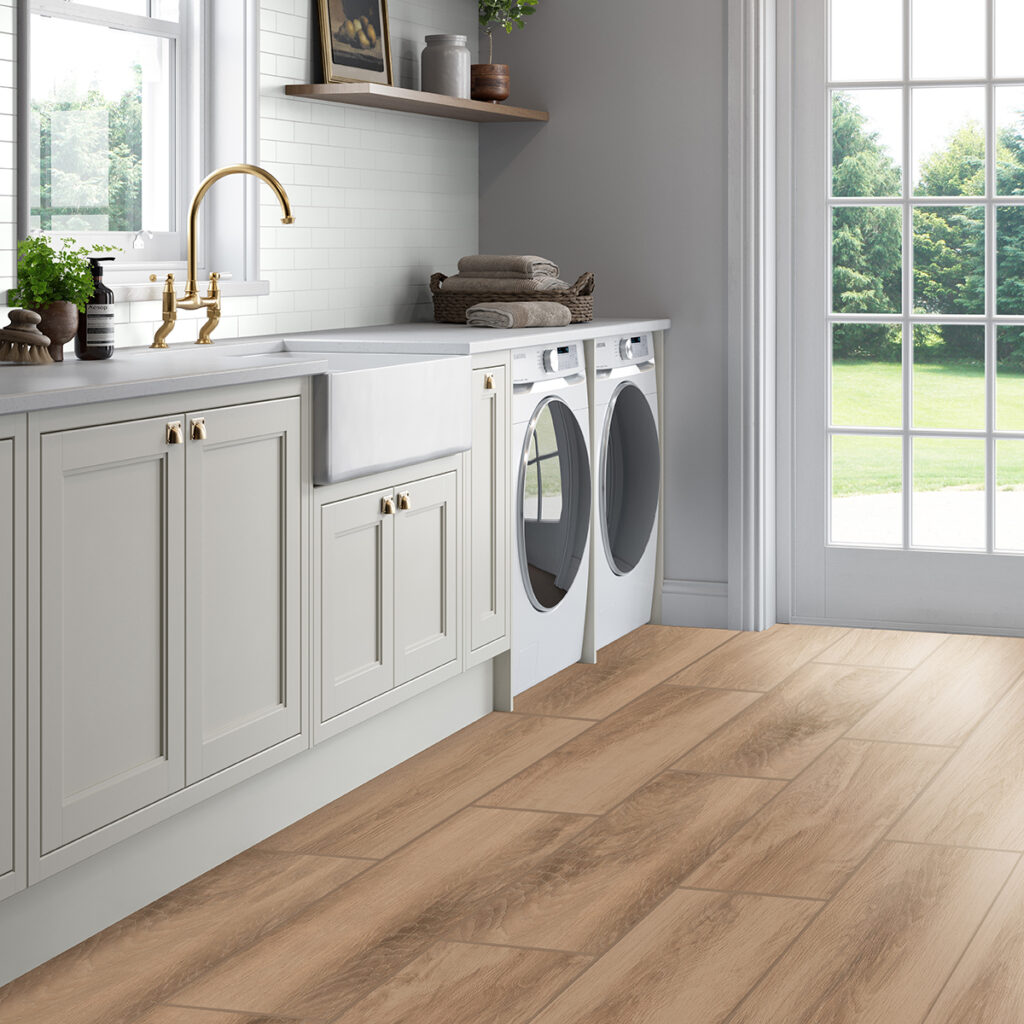
The look of hardwood in your laundry or mudroom? Yes, please! Finewood™ glazed porcelain perfectly displays the warmth of hardwood and performance of tile.
Right Sizing
While there are popular standard sizes, the sky is the limit in options for tile. What becomes more important is narrowing down a choice based on desired form and function.
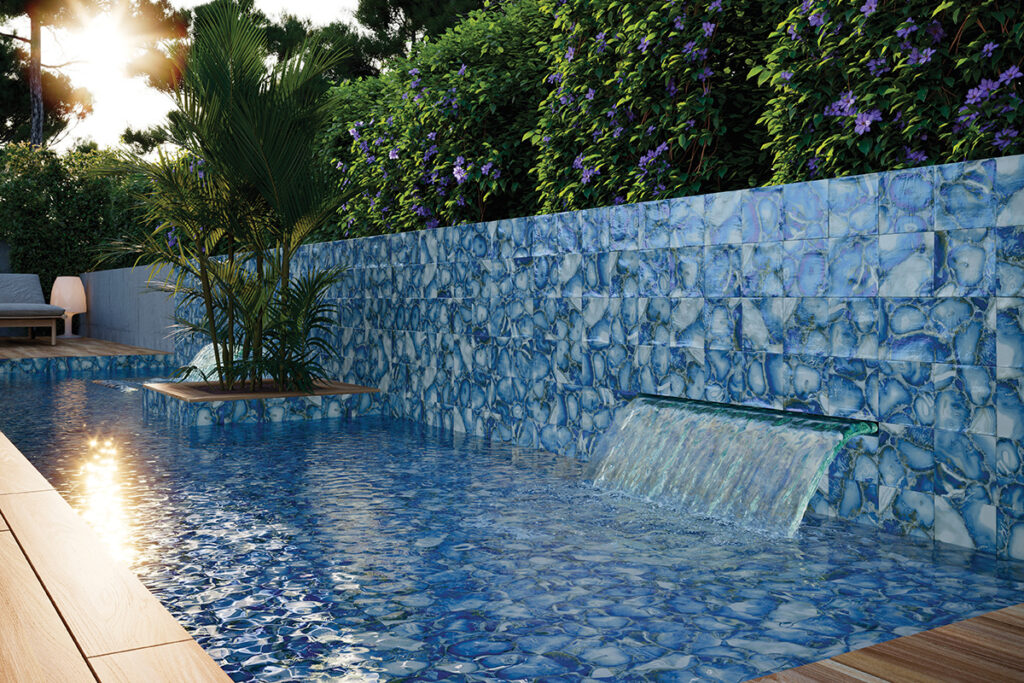
An enticing outdoor design features Immerse™ glazed porcelain, available in 6 x 6 inches, one of the most popular pool-rated sized tiles.
Large format tiles transform design with a monolithic effect and seamless-looking installation. Their considerable size provides a spacious feel thanks to minimal grout lines. Sizes such as 2” x 47” slim large format tiles create a distinctive and visually interesting aesthetic. Or perennially popular subways tiles boast solutions that meet most any aesthetic in a variety of sizes. Alternatively, a mosaic offers installation ease. Tile delivers when it comes to variety and sizing.
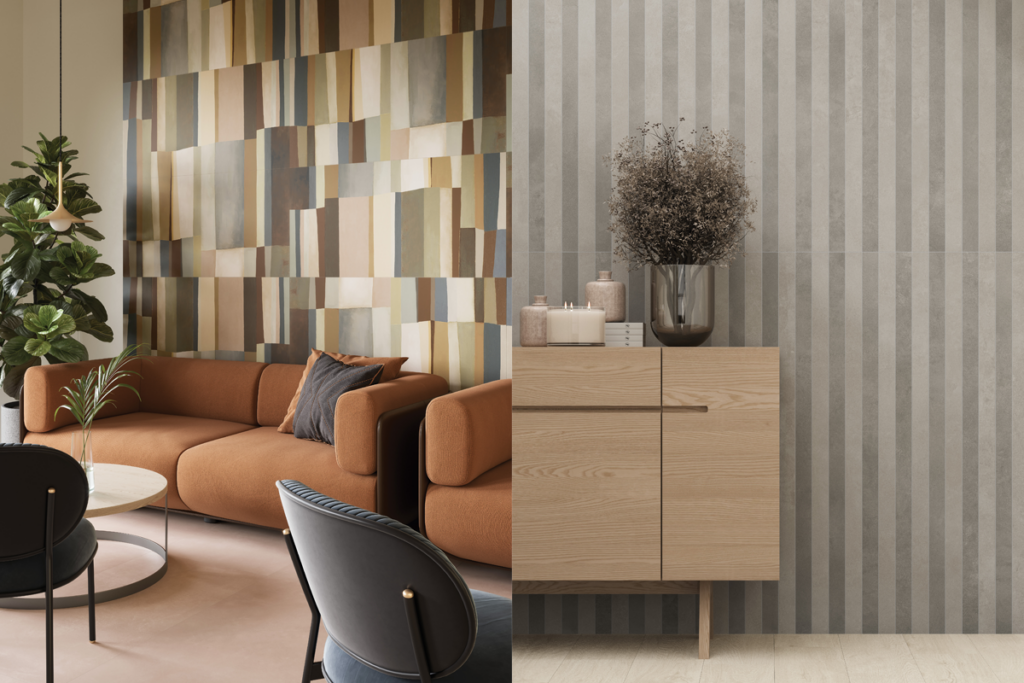
Tile continues to grow in popularity – and in sizes available. Agio™ glazed porcelain from the Enhance™ collection offers a variety of large format sizes in warm and earthy hues.
Health and Wellness
Tiles contribute to a healthier indoor environment by resisting allergens and pollutants. Their smooth, easy-to-clean surfaces deter the accumulation of dust, promoting better indoor air quality. Additionally, tiles are compatible with underfloor heating systems, ensuring a comfortable and energy-efficient living space that aligns with the principles of wellness-oriented design.
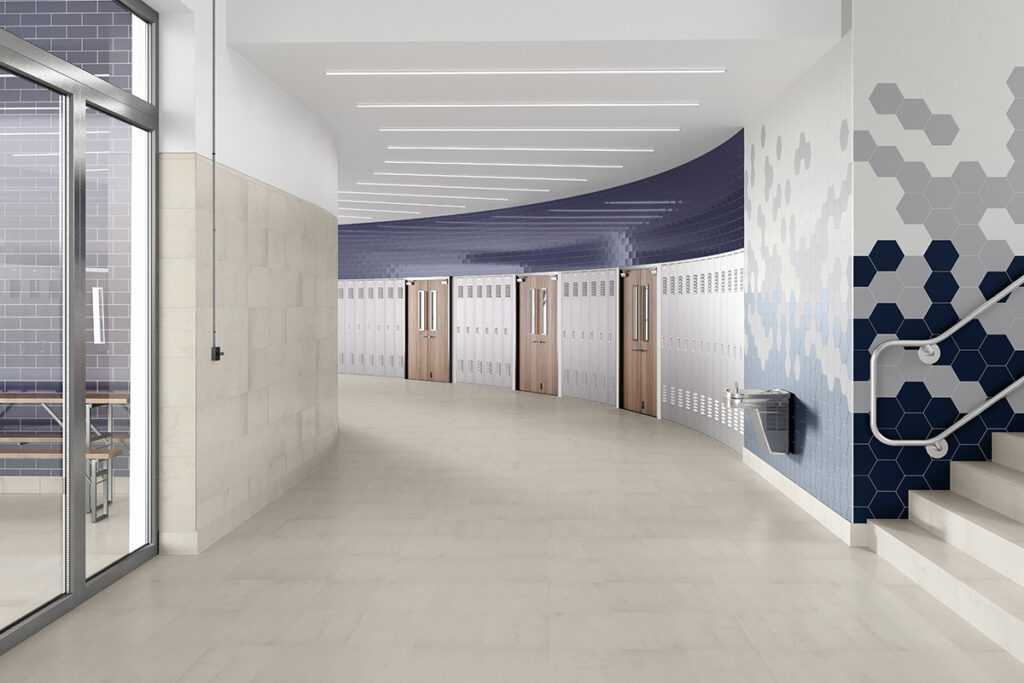
No matter where we live, work, learn, or play, wellness factors into material choices. And tile makes an excellent option from top to bottom. Featured here, Prodigy™ on the floors, Heksa™ hexagon-shaped tile next to the staircase and Catch™ in Color along the corridor’s wall.
Made with naturally occurring materials and some products that fire in excess of 2,000 degrees Fahrenheit, glazed porcelain and ceramic tiles provide for environments that do not support the growth of microorganisms.
Tile’s intrinsic ability to be hypoallergenic and resistant to fungus and bacteria provides a space that is just that — safe.
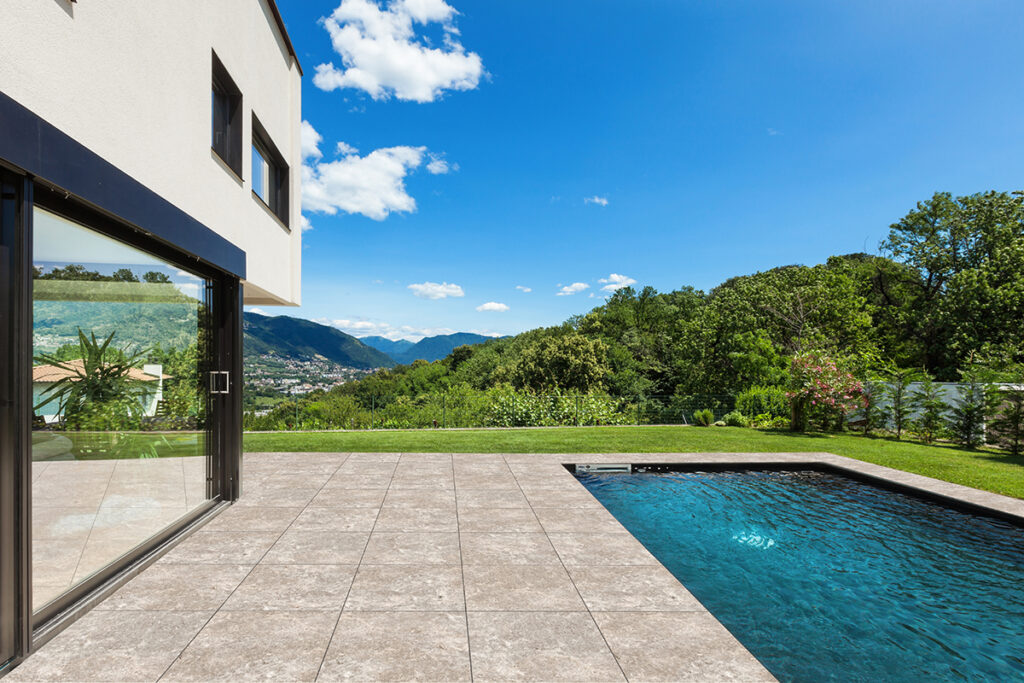
Tile is an excellent choice for interiors and exteriors, blending the benefits of both form and function. Xtra™ glazed body match porcelain mimics the look of concrete and natural stone finishes, while offering a choice resistant to moisture, stains, chemicals, and slips.
The setting materials used during installation, from grout to thin set and even entire shower and wet area systems, offer an additional layer of alkaline and antimicrobial protection, when specified and installed properly.
The benefits of tiles in contemporary interior design extend far beyond their functional roles. From sustainable practices and innovative solutions to health-conscious features and awe-inspiring aesthetics, tiles have become indispensable in creating homes that seamlessly marry form and function. As the design landscape continues to evolve, tiles remain a timeless and transformative element, redefining the very essence of elegance in our living spaces.
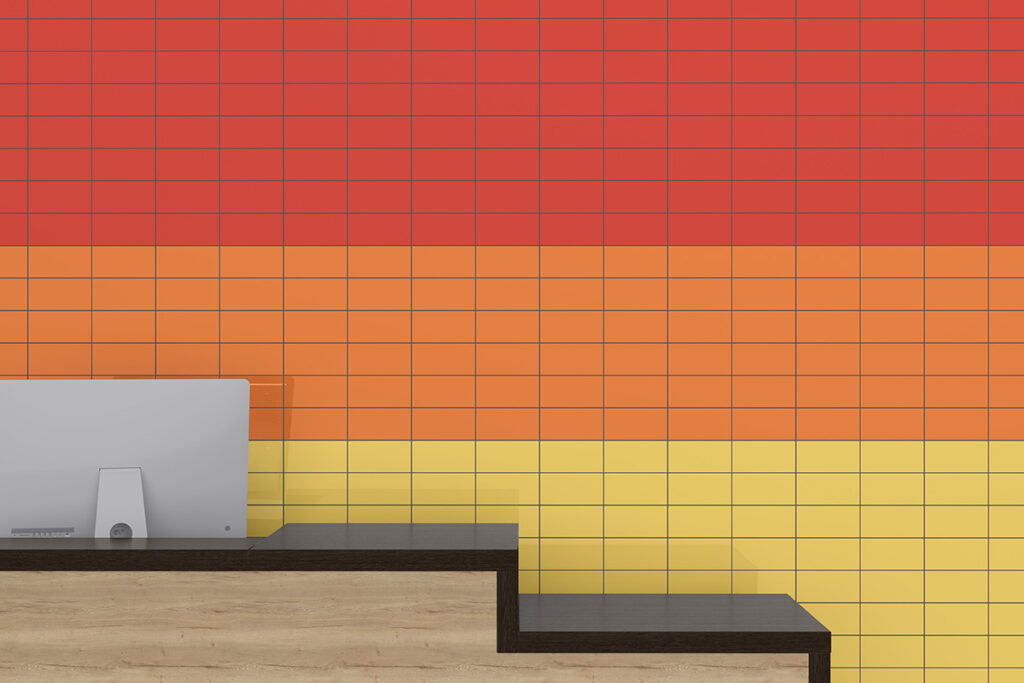
Be bold with a rainbow of tile options at your fingertips. Shown, Catch™ In Color in cheerful hues of Red, Orange and Yellow.
Learn more about the benefits of tile through Emser’s full collection.
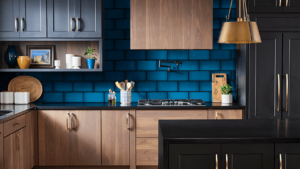
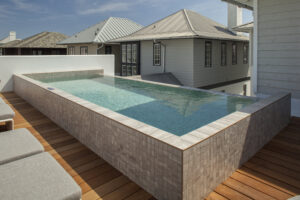
Leave a Reply